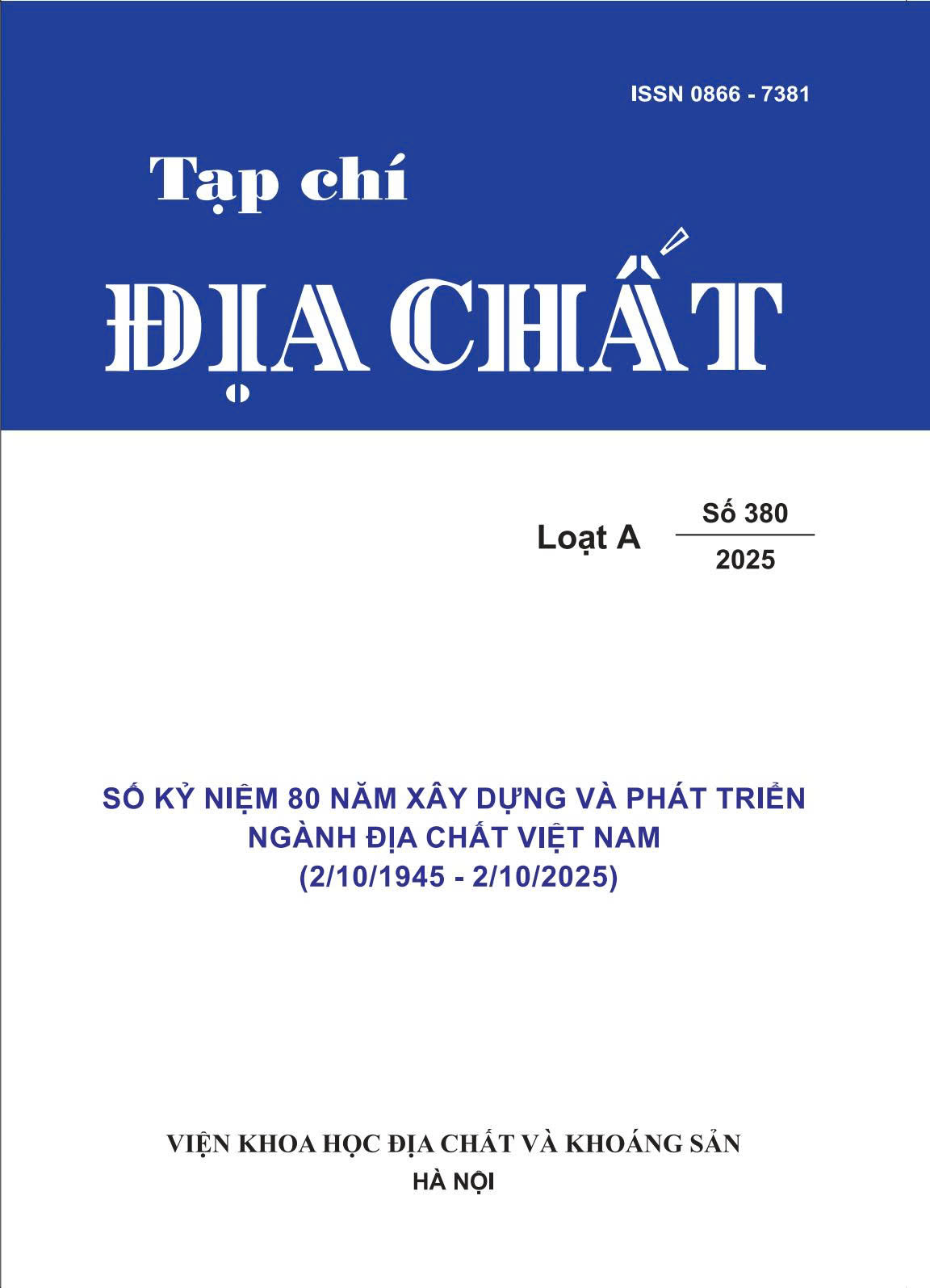Abstract
The Ngan Son granite complex (Ngan Son district, Bac Kan province) was investigated to clarify its petrographic features, geochemical composition, and U–Pb zircon age. The complex comprises two main intrusive phases: Phase I includes granite, biotite granite, and two-mica granite; Phase II consists of aplite and pegmatite dikes. Petrographic features reveal a foliated texture with major mineral assemblages of quartz (21–28%), plagioclase (23–40%), K-feldspar (26–43%), biotite (1–6%), and muscovite (3–12%), with accessory minerals including apatite, zircon, and sphene. Geochemically, the rocks are characterized by high SiO₂ contents (72.21–76.78%), high total alkalis (Na₂O + K₂O = 5.59–7.79%), aluminum saturation index >1 (1.08–1.74), and low Mg# values (20.25–33.92). All samples exhibit negative anomalies in Ba, Sr, Ti, and Eu (σ-Eu = EuN/√(SmN × GdN) ranging from 0.35 to 0.48), with CaO/Na₂O ratios of 0.33–0.52 and Al₂O₃/TiO₂ ratios of 28.5–52.1. These features are consistent with S-type granites from the Lachlan and Himalayan regions, suggesting a melt origin from clay-rich metasedimentary sources.
LA–ICP–MS zircon U–Pb dating yields mean ²⁰⁶Pb/²³⁸U ages of 432–434 Ma (Llandovery, Early Silurian), confirming a magmatic event during the Silurian in this area.
The results indicate that the Ngan Son granite complex represents typical S-type granites, formed in association with Caledonian orogenesis, likely linked to broader regional tectonic evolution during the Caledonian period, and possibly related to the Bac Quang–Ban Rin suture zone.

